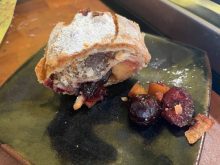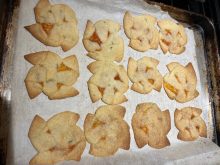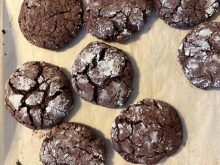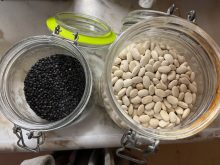I’m writing this column after my second day at the Combine to Customer tour, the crash course in the wheat supply chain organized by the Canadian International Grains Institute (Cigi) in Winnipeg. It’s one of those info-rich events where I have more material than I know what I can do with so watch for more stories in upcoming issues of Grainews.
Take this tour, and you will never look at a loaf of bread the same way again. Or noodles. Or pasta. Or beer.
Read Also

Gentle treatments for pain in the neck
Heading toward year-end, people unknowingly tense up against the cold and busyness, causing neck pain that can often be treated with appropriate support and gentle mobility, athletic therapist Kathlyn Hossack says.
That’s because one of the biggest take-aways from this tour is the amount of expertise that goes into the food we select from grocery store shelves. Grainews readers have plenty of knowledge and experience in growing the crops that ultimately become groceries somewhere in the world. Combine to Customer shows farmers what happens to their crops after they leave the farm: how they’re graded by staff at the Canadian Grain Commission (which is in the same mushroom-shaped building as Cigi at Portage and Main); how the technical staff at Cigi evaluated things like falling number, gluten strength, and stretchiness; how they mill it, bake it, and process it into Asian noodles and pasta.
Oh, and the Canadian Malting Barley Technical Centre is located in the same building. We learned all about creating malt and, as a reward for a hard day’s learning, sampled the beer — a nice blonde ale. If you stay at the Fairmont in downtown Winnipeg, they have the same beer on tap.
Making the bread
To me, the bread-baking demonstration really showcased this mostly hidden work, and how differences in process can make a big difference in the final product. They used Canada Western Red Spring (CWRS) wheat to make the dough. But when it came time to shape the loaves, they showed us three different processes, all using the same dough.
Cigi staffer Yulia Borsuk hand-shaped one pan loaf, showcasing her mad baking skills. She then ran another chunk of dough through a machine that shaped a second loaf. The third loaf was also shaped by the machine. However, Yulia cut that loaf in four, and turned two pieces sideways. She then stuck all four pieces together and placed them in the pan — they basically looked like four buns stuck together. That third loaf demonstrated cross-graining, which changes the cell structure in the dough. Big bakeries have an automated process for this, which doesn’t produce the four buns.
But the big difference was clear once the loaves were sliced open and we viewed the crumb structure (bakers are big on crumb structure, by the way). The hand-shaped loaf had some large holes inside. This would make it tricky to use for sandwiches, but some people prefer this. The second loaf, which was machine-moulded, had smaller holes, and was more uniform. The cross-grained loaf had the finest, most uniform crumb structure, making it ideal for sandwiches.
It’s a little like what farmers do. You and your neighbour can buy the same seed, fertilizer, herbicides and fungicides, but that doesn’t mean the end result is going to be the same. All kinds of management practices, along with environmental factors, will affect what you pull off the field.
If you ever get a chance to attend Combine to Customer, do it. It’s a good chance to find out what your international and domestic customers want, and just what people with knowledge and a little creativity can do with your crops.
















